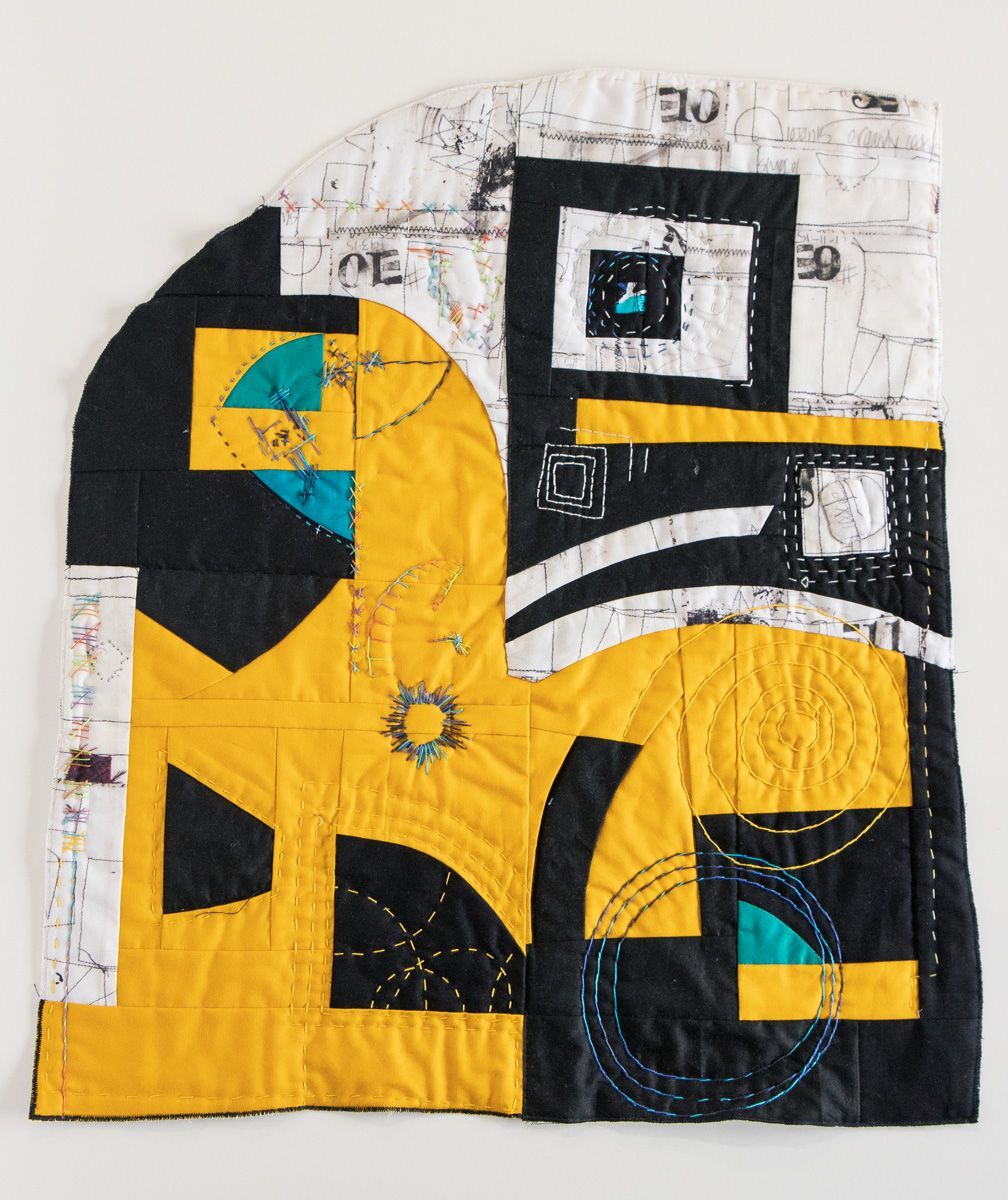Obsessive-Compulsive Disorder (OCD)

23x20in, quilter’s cotton (machine-pieced) & hand-quilted (pearle cotton/floss), created in 2023, NFS
This quilt is meant to represent obsessive-compulsive disorder which is a common, chronic, and long-lasting disorder in which a person has uncontrollable, reoccurring thoughts ("obsessions") and/or behaviors ("compulsions") that he or she [or they] feels the urge to repeat over and over (to manage/avoid intense emotional distress). Some with OCD can also have a motor/vocal tic disorder, hoarding issues, and intense perfectionistic tendences (that create distress), and even psychosis symptoms.
What to look for: The improvisationally pieced nature and shape of this mini quilt is meant to incite feelings of discomfort and curiosity. From the inside looking out, compulsive behaviors can seem rational and absolutely necessary, but from the outside, it may seem nonsensical, unrelated, or unnecessary. The overlapping circles are meant to represent how relationships are impacted, and other details visually demonstrating some ways it manifests outwardly.
Book recommendation(s): These books are not meant to replace medical intervention and/or skilled therapy.
The Mindfulness Workbook for OCD (2nd edition): A Guide to Overcoming Obsessions and Compulsions…
https://a.co/d/dJHu2zg
When a Family Member Has OCD: Mindfulness and Cognitive Behavioral Skills…
https://a.co/d/bGAzXRJ
Standing Up to OCD Workbook for Kids: 40 Activities… https://a.co/d/1UhR2Jh
Breaking Free of Child Anxiety and OCD: A Scientifically Proven Program for Parents https://a.co/d/6VXQ9lU
From NIMH (National Institute for Mental Health):
Obsessive-compulsive disorder (OCD) is a common, chronic, and long-lasting disorder in which a person has uncontrollable, reoccurring thoughts ("obsessions") and/or behaviors ("compulsions") that he or she [or they] feels the urge to repeat over and over. Note, some with OCD can also have a motor/vocal tic disorder.
Obsessions are repeated thoughts, urges, or mental images that cause anxiety. Common symptoms include:
- Fear of germs or contamination
- Unwanted forbidden or taboo thoughts involving sex, religion, or harm
- Aggressive thoughts towards others or self
- Having things symmetrical or in a perfect order
Compulsions are repetitive behaviors that a person with OCD feels the urge to do in response to an obsessive thought. Common compulsions include:
- Excessive cleaning and/or handwashing
- Ordering and arranging things in a particular, precise way
- Repeatedly checking on things, such as repeatedly checking to see if the door is locked or that the oven is off
- Compulsive counting
But a person with OCD generally:
- Can't control his or her thoughts or behaviors, even when those thoughts or behaviors are recognized as excessive
- Spends at least 1 hour a day on these thoughts or behaviors
- Doesn’t get pleasure when performing the behaviors or rituals, but may feel brief relief from the anxiety the thoughts cause
- Experiences significant problems in their daily life due to these thoughts or behaviors
Resources:
Click here to watch a video Debunking the Myths of OCD.
Click here for video on what causes panic attacks and how to prevent them.
Learn more about this diagnosis at the National Institute for Mental Health.
